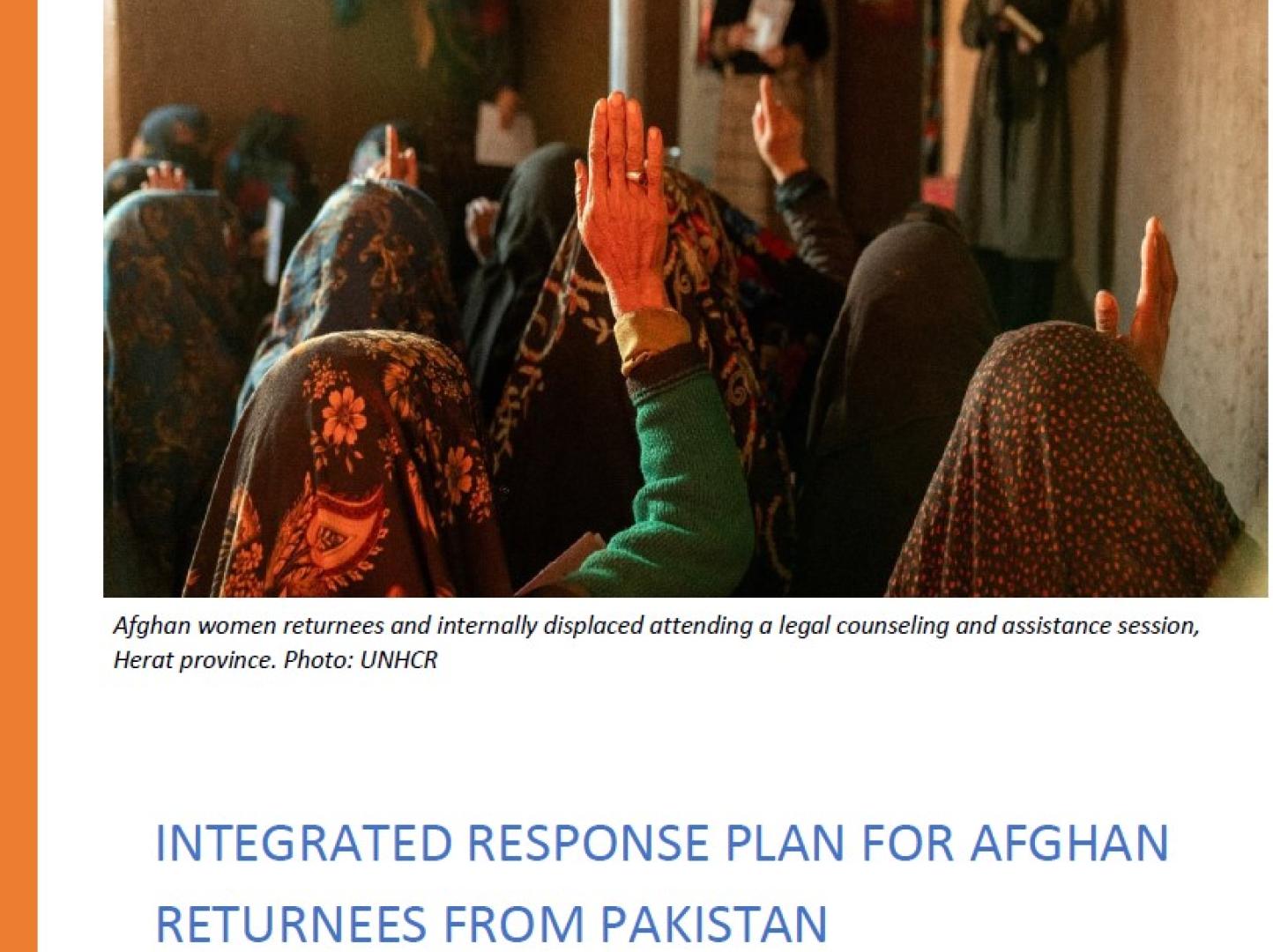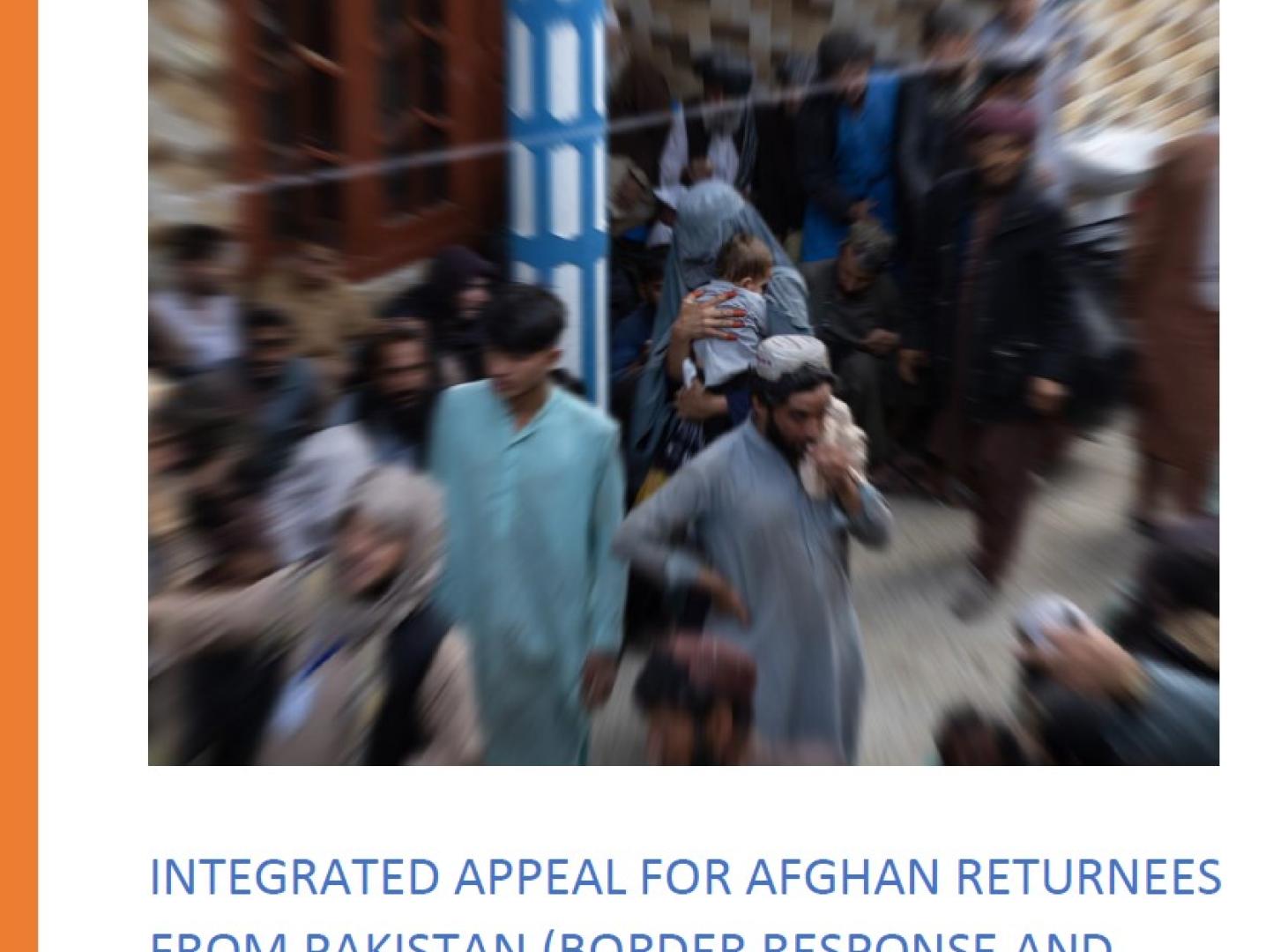Afghanistan Humanitarian Fund Annual Report 2021

HUMANITARIAN CONTEXT
Humanitarian situation in 2021
Forty years of war, recurrent natural disasters, chronic poverty and the COVID-19 pandemic were a deadly combination for people in Afghanistan in 2021. At the start of the year, 18.4 million people (nearly half the population) required humanitarian assistance to survive, while tens of millions required social assistance to weather the negative effects of the pandemic.
Food insecurity soared and malnutrition, particularly among women and children, was rife.
Starting the year as one of the worst humanitarian crises globally, the humanitarian situation in Afghanistan deteriorated sharply in 2021 due to severe drought, increased conflict dynamics and the abrupt suspension of international development funding following the 15 August takeover of the country by the Taliban. The conflict, coupled with political and social upheaval and economic collapse, pushed millions more people into dire circumstances. By the end of the year, the 2022 Humanitarian Needs Overview identified 24.4 million people in need, a 33 per cent increase in one year.
The 2021 Afghanistan Humanitarian Response Plan sought to address these critical needs for 15.7 million of the most vulnerable people within an enormously challenging operational environment, at an initial cost of $1.3 billion. In response to increased humanitarian needs, a Flash Appeal was launched in September that pushed the overall humanitarian requirement to $1.5 billion to reach 17.7 million people.
Armed conflict
High-tempo conflict in the first seven months of 2021 harmed the people of Afghanistan. Civilian casualties in the first half of 2021 reached record levels, with particularly sharp increase in killings and injuries since May 2021 when international military forces began their withdrawal and fighting intensified¹. 2
The number of women and children killed and injured during the first six months of 2021 was almost twice the corresponding figure for 2020, and higher than for any other year since 2009.
Explosive ordnance
While the significant decrease in armed conflict in most parts of Afghanistan after 15 August led to a drastic reduction in civilian casualties from ground engagement and air strikes, civilian casualties from improvised explosive devices (IED) and explosive remnants of war (ERW) remained high. Afghanistan has one of the highest levels of explosive hazard contamination in the world and from 15 August to 31 December, more than 1,050 civilian casualties, including more than 350 civilian deaths, were recorded.
Protection and human rights
According to the global Women Peace and Security Index for 2021-2022, Afghanistan is the worst place to be a woman or girl. The collapse of the previous Afghan Government and the completion of the Taliban takeover of the country in August saw an immediate roll-back of girls’ and women’s rights, including reversals of access to education, justice, employment, services, opportunities and freedom of movement.
Prolonged severe drought
A national drought was officially declared in June 2021, the worst in three decades. Some 80 per cent of the country was under either severe or serious drought. Exceptionally low precipitation and failed harvests added to concurrent food, health and income crises.
Economic crisis and livelihoods
The sharp economic decline, driven by aid and asset freezing, as well as financial sector disruptions, pushed Afghanistan into a severe livelihoods crisis accompanied by spiralling poverty. Millions of already vulnerable Afghans who experienced sudden loss of income and depletion of household reserves began resorting to dangerous coping strategies to survive, giving rise to concerns about protecting women and children from exploitation and abuse, including trafficking, the sale of children, early or forced marriage, the recruitment and use of children by armed forces, and child labour.
Food insecurity and malnutrition
In one of the worst food insecurity and malnutrition crises globally, Afghanistan started the year with 16.9 million people in ‘crisis’ and ‘emergency’ levels of food insecurity. Nearly one in two children under age 5 and one in four pregnant and lactating women is facing acute malnutrition. Drought and economic shocks caused these numbers to soar during the year.
Growing health crisis
A complex interplay of factors contributes to the very poor health outcomes for many Afghans. The largest proportion of deaths (43 per cent) is caused by communicable, maternal, prenatal and nutrition conditions. Women and children have poor access to health care, driving maternal and child mortality.
In 2021, four cases of wild polio virus were reported in the country. Challenges around door-to-door vaccination campaigns are likely to exacerbate this issue in 2022. Afghanistan grappled with chronic acute watery diarrhoea (AWD) cases, and measles and dengue fever outbreaks. Equally, the 2018 National Mental Health Survey found that approximately 50 per cent of people in Afghanistan experience depression, anxiety or post-traumatic stress because of violence and other factors. COVID-19 continued to be a serious threat, compounded by low adherence to preventative measures and low vaccination rates (11 per cent by the end of the year, with a significant gender imbalance).
The health sector had been almost entirely funded by development funding, the suspension of which paralysed health systems nationally following the Taliban’s August takeover. Comprehensive and immediate support was needed to keep health systems running.
Additionally, the closure of most commercial land and air routes following the events of August also disrupted the import of critical pharmaceutical supplies.
Internal displacement and returns Armed conflict, drought, economic collapse and a change in regime contributed to new displacement in 2021. Over 700,000 people were verified as having been displaced by conflict. Conflict-related displacement was recorded in all but one province and more than half of all displaced people in 2021 were children. Compared with 2020, the number of people displaced by conflict increased by nearly 80 per cent.
Displaced people, particularly women, children, minorities, and child- and female-headed households often live in crowded settlements, characterized by limited access to safe shelter, safe water and sanitation facilities, and increased exposure to protection threats, such as forced evictions, discrimination based on status, child rights violations and child labour, family separation and gender-based violence (GBV).
Access constraints and attacks on aid workers
Following extremely high levels of armed conflict in the first part of the year, the reduction in active conflict after August allowed improved physical access to more parts of the country, enabling humanitarian workers to more safely and easily reach communities in unserved and underserved locations. Nevertheless, 2,085 incidents were recorded by the Humanitarian Access Group (HAG) of access impediments faced by humanitarians, the most ever recorded by the HAG. These mostly related to movement restrictions, violence against staff and their facilities, military operations and humanitarian interference.
There were 36 humanitarian staff killed, 121 injured, 60 abducted and 100 detained in 2021. Attacks on aid workers in Afghanistan remain unacceptably high and show continued need for prioritizing security risk management and coordination for humanitarian organizations.










